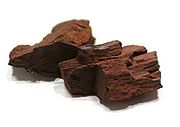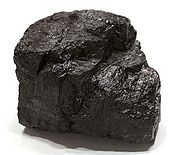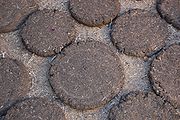Knowledge fuels change - Support energypedia!
For over 10 years, energypedia has been connecting energy experts around the world — helping them share knowledge, learn from each other, and accelerate the global energy transition.
Today, we ask for your support to keep this platform free and accessible to all.
Even a small contribution makes a big difference! If just 10–20% of our 60,000+ monthly visitors donated the equivalent of a cup of coffee — €5 — Energypedia would be fully funded for a whole year.
Is the knowledge you’ve gained through Energypedia this year worth €5 or more?
Your donation keeps the platform running, helps us create new knowledge products, and contributes directly to achieving SDG 7.
Thank you for your support, your donation, big or small, truly matters!
Cooking with Coal
Cooking Energy System | Basics | Policy Advice | Planning | Designing and Implementing ICS Supply | Designing and Implementing Woodfuel Supply | Climate Change | Extra
Introduction
Coal is among the most important fossil fuels, accounting for 25% of total energy consumption and 40% of worldwide electricity generation.[1] It is not to be confused with charcoal. Coal is a black, solid, carbon-rich mineral, which is mined underground, while charcoal is the ultimate form of burnt wood.
Coal for Cooking
Coal is not so often found as a cooking fuel on its own, it is rather utilized in regions where cooking and space heating are combined. Due to its regional availability, coal is used for cooking e.g. in China and India. The World Health Organization does not recommend the use of unprocessed coal in households due to carcinogenic emissions and toxic elements such as fluorine, arsenic, lead, selenium, and mercury, which are not destroyed by combustion.[2]
Coals are formed in processes of decomposition and chemical conversion of immense masses of organic matter. This process is also known as coalification and means 'the gain in carbon content'. The process begins with peat as a parent material, is supported by increasing temperature and depth of burial, and ends with anthracite.
Coals are classified according to their degrees of coalification: the major ones are lignite (brown coal), bituminous (black coal), and anthracite.[3] The most geological reserves of non-renewable energy forms consist of coal. The United States (31.4%) followed by China (25%), and India (10%) have the highest shares of black coal reserves in the world.[4] Due to the higher energy content of black coal it is often exported, whereas brown coal is a regionally used energy source.
| Type | Lignite (Brown Coal) | Bituminous (Black coal) |
Anthracite |
|---|---|---|---|
|
|
|||
1.) Center for Applied Energy Research University of Kentucky |
2.) Chemical Engineering |
3.) United States Geological Survey | |
| Carbon content [%] | 60 – 75 | 75 – 91 | > 91.5 |
| Energy content in MJ/kg | < 28.6 | 28.6 – 35.2 | 35.3 |
Coal used in households for cooking and heating varies in composition, form, and way of application. Coal is used in different forms such as “bee-nest coal briquettes” (also called “bee-hive”), “coal cakes”, “coal balls” and raw coal. Bee-nest coal briquettes, for example, are typically made of anthracite, semi-anthracite, and clay, which can be used as a binding material and burn-rate controller. The concept, which comes from China, assumes that the height and diameter of the stove burning chamber corresponds to the coal briquette. This type of coal briquette is primarily used for heating in China and South-Korea, but also for cooking, e.g. in Vietnam.[6] In some areas, where coal is scarce, coal dust is used in a mixture with dung, formed to cakes and dried in the sun, as shown in the picture.
Further Information
- Improved Cooking Portal on energypedia
- Coal Stoves, article on energypedia
- Mineral coal in comparison to wood and charcoal – experience from Kiwira, Tanzania by HEDON (2010)
- Household use of solid fuels and high-temperature frying. IARC Monographs on the Evaluation of Carcinogenic Risks to Humans by IARC (2010)
- Vietnam Household Energy Technical Assistance: Improved Coal Briquetting and Commercialized Dissemination of Higher Efficiency Biomass and Coal Stoves by UNDP and WB-ESMAP (1996)
- Greenhouse gases and other airborne pollutants from household stoves in China: A database for emission factors, by Zhang J. et al. (2000)
- Reserven, Ressourcen und Verfügbarkeit von Energierohstoffen, by BGR (2010) provides an overview of energy resources and its global distribution.
- Beyond coal. Scaling up clean energy to fight global poverty. Oct 2016: Position paper of Christian Aid, the Institute for Development Studies, the Overseas Development Institute, Oxfam, Practical Action, Renewable and Appropriate Energy Laboratory at the University of California, Berkeley, and others. The position paper offer 4 key messages: 1. More coal will not end energy poverty 2. Coal is given too much credit for the reduction of extreme poverty 3. Better energy options exist to lift people out of income poverty and 4. More coal will entrench poverty
- Energy Access: why coal is not the way out of energy poverty (2014): This Carbon Tracker report shows how rural communities in Africa and India suffering most from a lack of modern energy can exploit the falling costs of renewable power, to access electricity without the need for expensive grid transmission networks. The report’s findings are in stark contrast to the views of the global coal industry, whose biggest publicly traded company Peabody Energy Corp, maintains coal is “essential to meet the scale of Africa’s desperate need for electricity.”
References
This article was originally published by GIZ HERA. It is basically based on experiences, lessons learned and information gathered by GIZ cook stove projects. You can find more information about the authors and experts of the original “Cooking Energy Compendium” in the Imprint - GIZ HERA Cooking Energy Compendium.
GIZ HERA Cooking Energy Compendium
- ↑ Smith, K. et al. (2013): Energy and Human Health. Annual Review of Public Health http://www.annualreviews.org/doi/abs/10.1146/annurev-publhealth-031912-114404
- ↑ WHO (2014): Frequently Asked Questions WHO guidelines for indoor air quality: household fuel combustion http://www.who.int/indoorair/guidelines/hhfc/FAQs_Nov2014.pdf
- ↑ Encyclopedia Britannica http://www.britannica.com/science/coal-fossil-fuel
- ↑ BGR (2010): Reserven, Ressourcen und Verfügbarkeit von Energierohstoffen https://energypedia.info/images/d/d9/Energiestudie-Kurzstudie2010-1-.pdf
- ↑ Brockhaus. DieEnzyklopädie (1996); F. A. Brockhaus Leipzig
- ↑ UNDP and ESMAP 1996
























